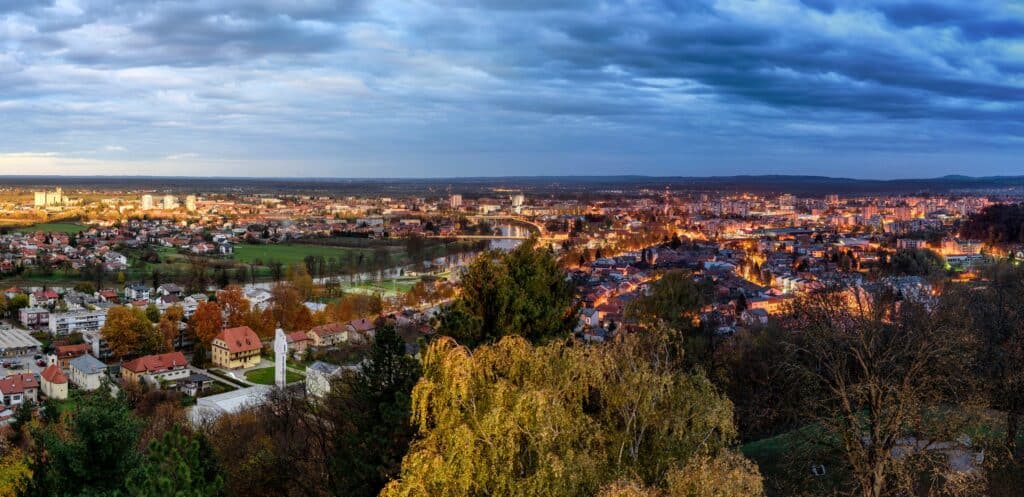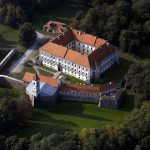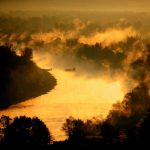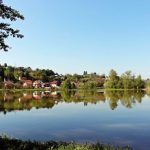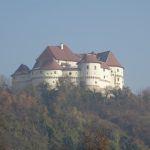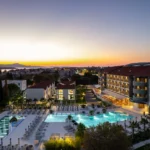Beautiful city of beer, four rivers, promenades, parks and 10, 000 trees: Karlovac.
- Welcome to Karlovac Croatia!
- 5 best things to do in Karlovac
- Where to stay?
- Where to eat?
- 5 things you (maybe) didn’t know about the town
- Top 5 day trips from Karlovac
- Karlovac map
- How to get to Karlovac and get around
Welcome to Karlovac Croatia!
Not many towns can pinpoint their exact birthdate. But, Karlovac can. Built as a star-shaped fortress by the Austrian empire in 1579, it formed part of Europe’s frontline defense against the Ottomans. Indeed, you can still trace the star shape through the town today.
Contemporary Karlovac is the administrative capital of Karlovac County. But, it’s more than just the centre of the county’s cultural and social life. In fact, because it’s just 55 kilometres from Zagreb, it’s a popular weekend escape for residents of the capital. And, being on the way to Plitvice Lakes National Park, it’s the best overnight choice for anyone wanting to combine a park visit with a big town stay. And, there are many reasons why you should choose Karlovac. Full of great events, nature, food and things to do, Karlovac is worth a close look. But, don’t rush it. This city of parks, trees and promenades reveals itself best at an unhurried pace.
Five best things to do in Karlovac
1) Dani Piva and Karlovac events
Special events in the city create the perfect excuse to visit. Karlovac knows this all too well. Subsequently, they really know how to put on a great show.
Ivanjski krijes (St. John’s Eve bonfires)
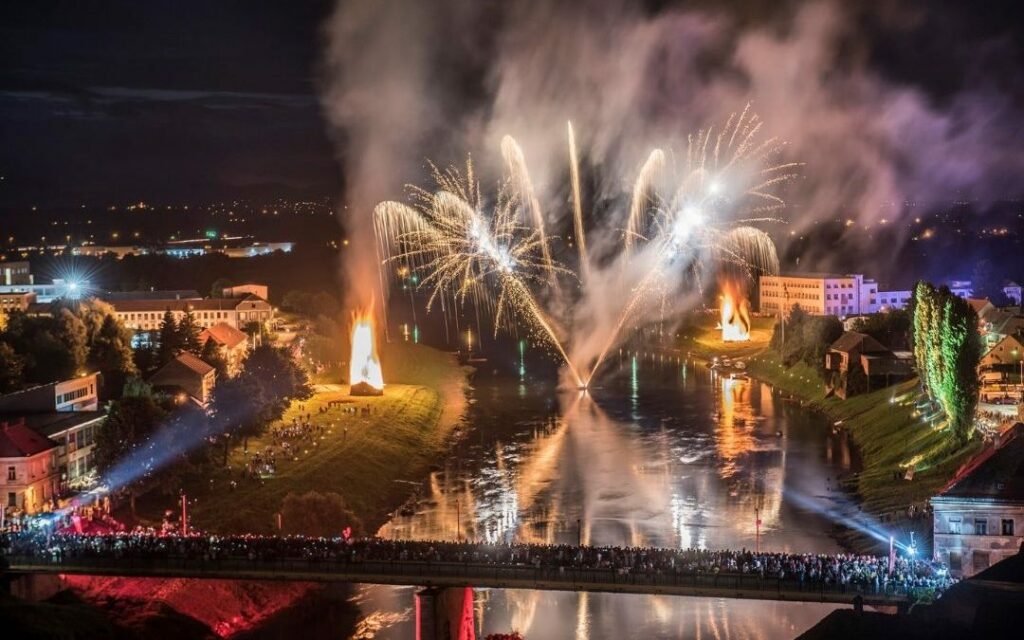
The oldest event in Karlovac, dating back to at least 1779, Ivanjski krijes is the spectacular start of summer. Born of a friendly rivalry between two city neighbourhoods, Banija and Gaza, the event now enthralls the whole town. Not only do they compete in size and duration of opposing bonfires, but also in a football match and tug-of-war. Later, the whole town celebrates with fireworks, food and music on the streets.
Next date: Thursday 23 June 2022
Zvjezdano ljeto
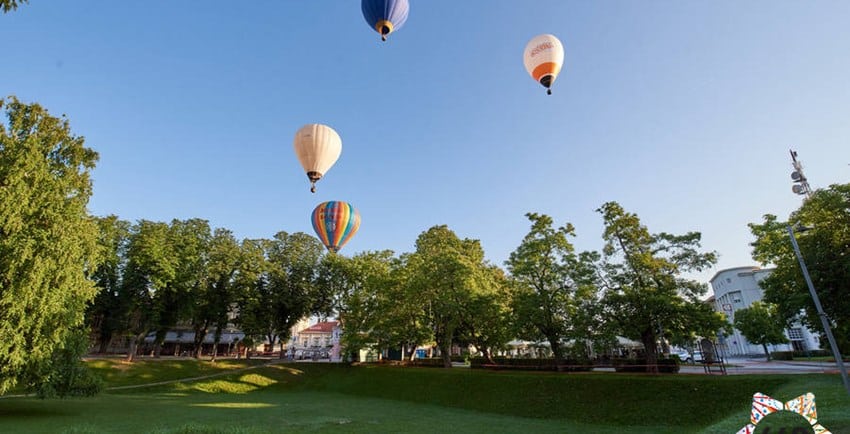
Beginning with Ivanjski krijes, this three-week festival continues to fill Karlovac with fun. You’ll find gastro, folklore, music and more spilling out into the streets and parks. In previous years, the event has incorporated Croatia’s second-biggest meeting of hot air balloons.
Next date: 23 June – 13 July 2021
Dani Piva (Karlovac Days of Beer)
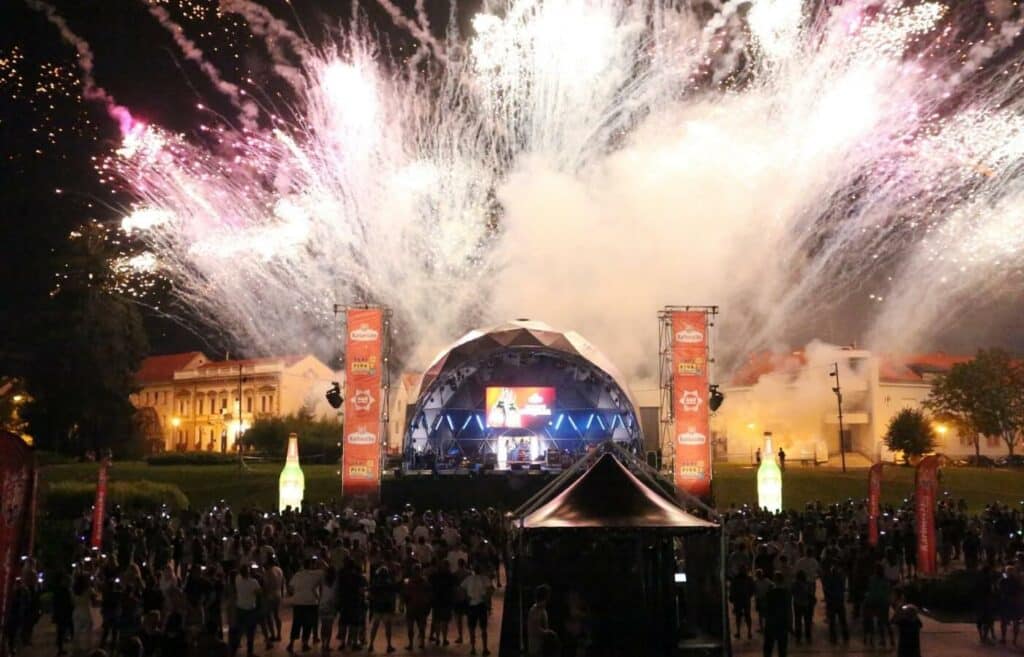
Towards the end of summer, Karlovac celebrates its tradition of beer brewing. Indeed, the making of beer in Karlovac is at least three centuries old. Some of the biggest names in regional rock and pop come to play on the event’s stages. There’s also traditional arts & crafts fair, an amusement park and food in every street.
Next date: 27 – 31 August 2021
Advent
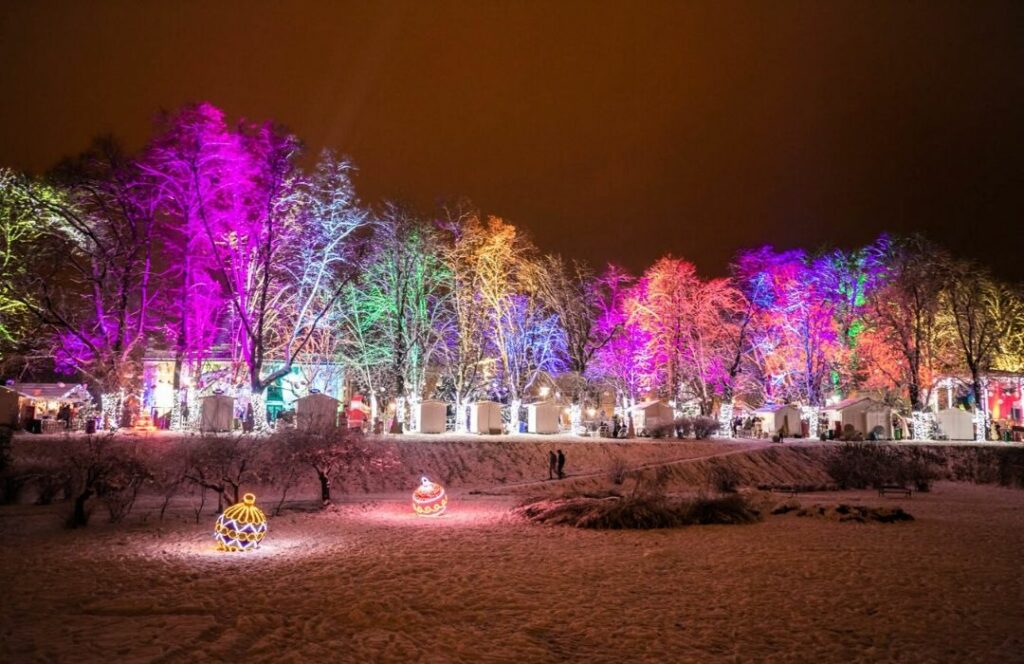
Brilliant lights and a park side Christmas Village warm the soul in Karlovac winter. Though some trees have lost their leaves, their multi-coloured replacements more than make up for the absence. A walk along the promenade is like at no other time of year, with the scents of mulled wine and the sounds of Christmas music filling the air with magic.
Next date: December 2021
2) Explore the Four Rivers of Karlovac
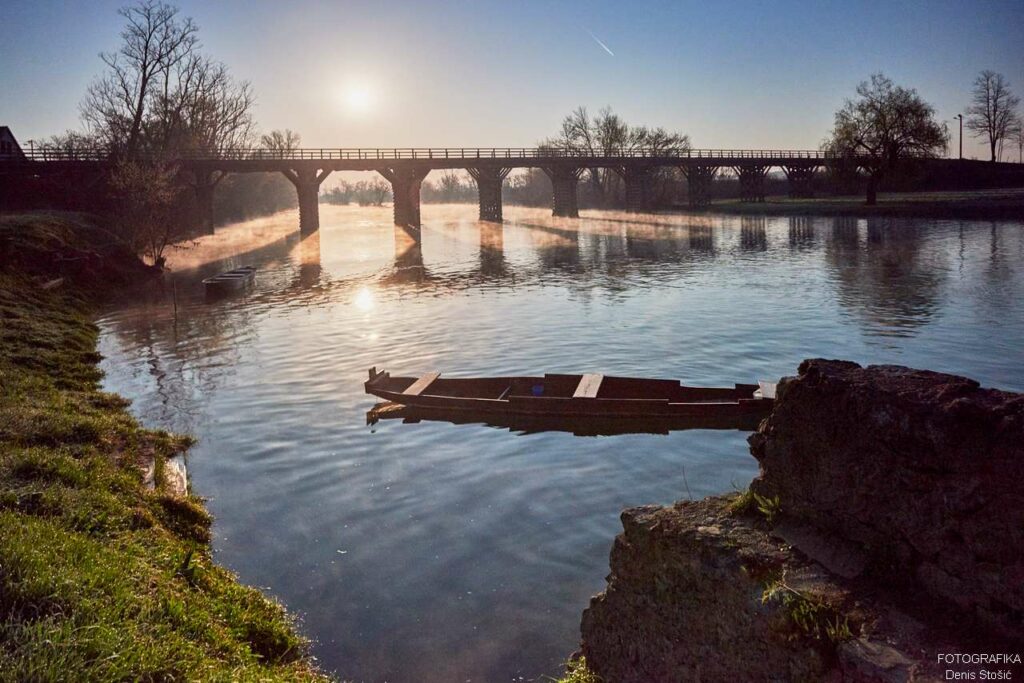
Known as the City of Four Rivers, if you want to experience Karlovac, then you need to meet them all. Here, we’ll introduce you to each and show you some of the best ways you can get acquainted.
Mrežnica river
With 93 waterfalls falling over its 63-kilometre run, Mrežnica is perhaps the most spectacular of the Karlovac rivers. In places, its banks hold holiday homes and restaurants. Because it is recognised as a major recreation area. In fact, when residents of Zagreb want to cool off in summer, this is where they come.
Korana river
No less than the source of Plitvice Lakes National Park, the Korana goes on to form some 25 kilometres of natural boundary between Croatia and Bosnia. It ends its 138.6 kilometre journey in Karlovac, where it flows into the Kupa.
As shown above, flying over the Korana in a Karlovac suburb.
Kupa river
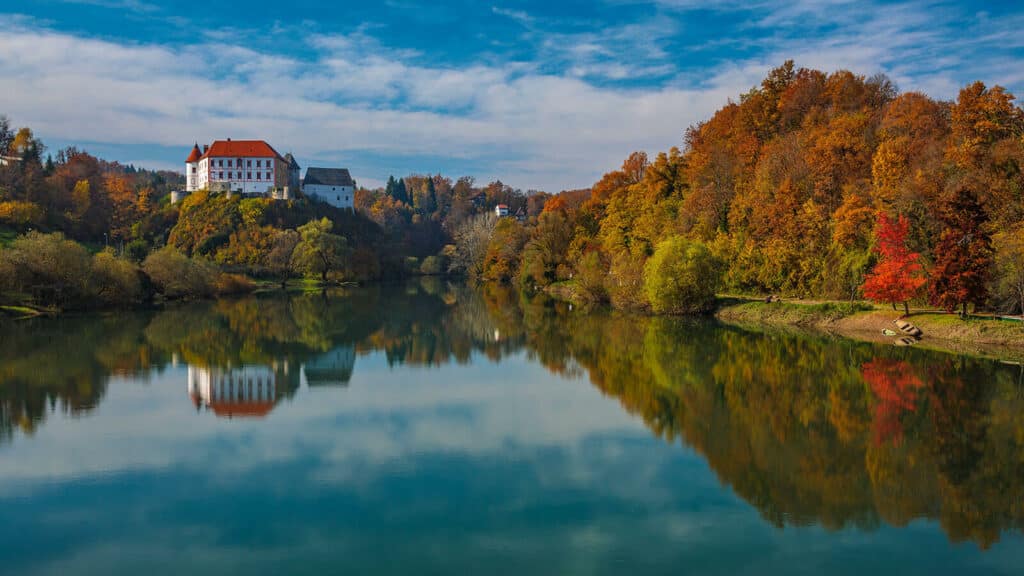
At 297 kilometres in length, the Kupa is the longest of Karlovac rivers. From its source in Risnjak National Park it soon becomes a huge 118 km of natural border between Croatia and Slovenia. Eventually, it breaks away and drops down to Karlovac. Thereafter, strengthened by the Korana and Dobra, it makes its way to Sisak where it meets the Sava.
Dobra river
Three of the Karlovac rivers are gregarious travellers. By comparison, the Dobra prefers to stick closer to home. Almost all of its 104 kilometres is found in Karlovac County. Furthermore, the Dobra is intensely populated by different species of fish. Accordingly, its surroundings are an important habitat for birds.
a) How to meet Karlovac rivers: Foginovo beach
If you thought the only good beaches were on the coast, then you were wrong.
b) How to meet Karlovac rivers: Grain boat on the Kupa – Žitna lađa ‘Zora’
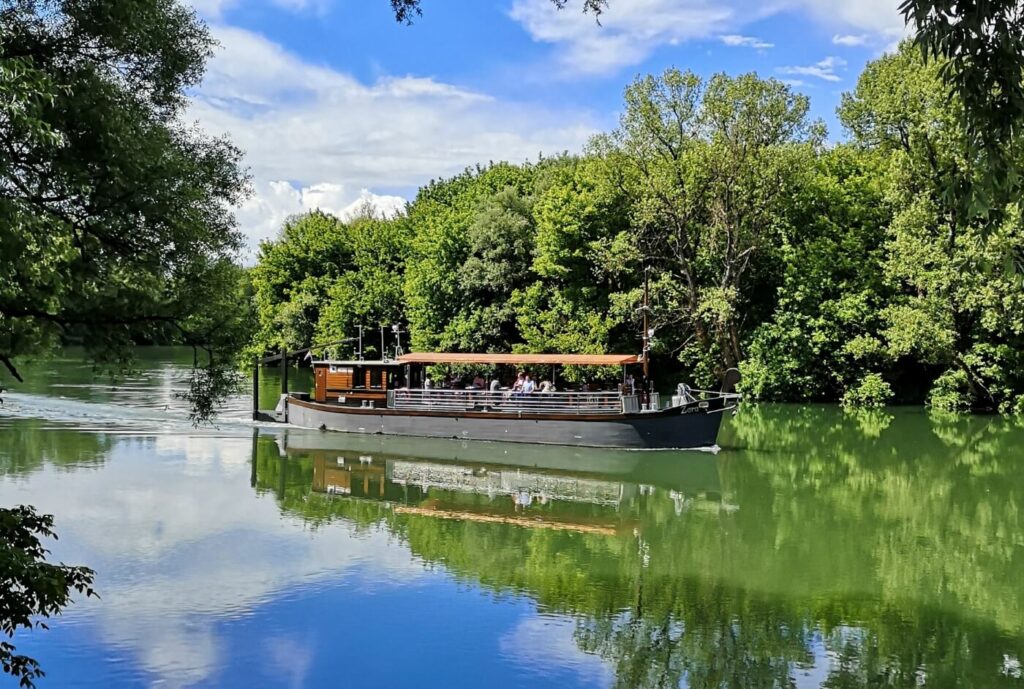
The further you follow the rivers from Karlovac, the more modern life slips from view. As the noise of car engines recedes, the only sound to replace them is the buzz of nature. A dragonfly darts above the water, maybe a kingfisher dives in. However, such tranquil scenes are relatively new here.
Karlovac the inland port
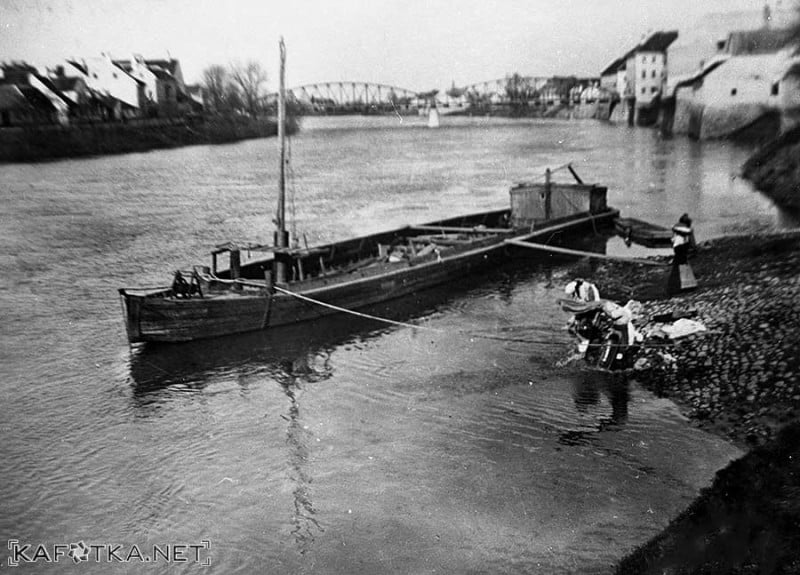
In fact, during the 18th and 19th centuries, Karlovac was a significant inland port. Linking it to another river port in Sisak, the Kupa was a hive of industry. Along this river, goods like salt, spices, wood, tobacco and grains were transported. Sometimes, they travelled here from as far east as Timisoara in Romania. Karlovac was the furthest place such loads could travel by boat. From here, goods would travel by horse and cart to less fertile, more arid places in Dalmatia.
Actually, such horses were not the only ones involved. In fact, it was horses that pulled the big wooden grain boats along the river. Indeed, today you can still walk waterside paths along the Kupa that their hooves helped make. Or, you can do the journey by boat.
Return of the only Grain boat on the Kupa
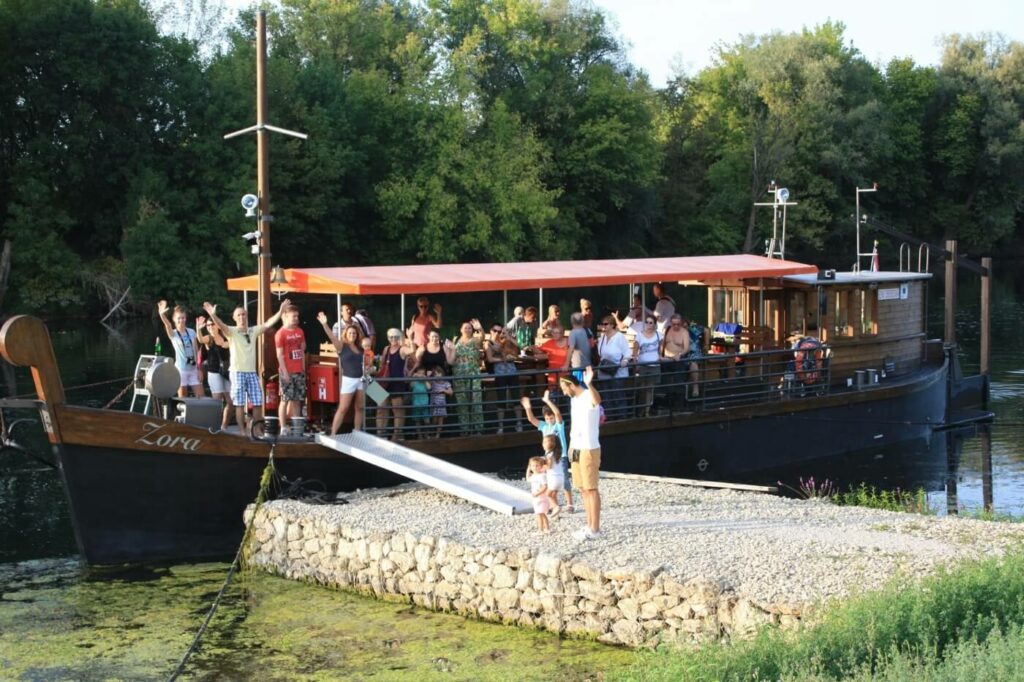
After finishing university in Zagreb, two locals – Jasmina Cvetković and Ana Prepolec – returned to their quiet villages on the Karlovac outskirts. They were glad to be back. Although, back in the village, neither could see any appealing jobs on the near horizon. So, they decided to create some for themselves. Specifically, they planned to return a traditional tumba grain boat to the Kupa river as a tourist attraction. At 25 metres in length and capable of carrying around 30 tons, no such boat had been seen on the Kupa for 150 years.
Today, you can visit the Grain boat Zora in the village of Brođani. Its calm cruise along the nature-filled Kupa belies the effort made to get it here. In detail, applying for European funds, its construction in Zagreb and, eventually, its transportation by road to Sisak. From there, it travelled the exact river route of its long-forgotten predecessors. Now it operates seasonally, from April to November, making daily trips at 11am or as commissioned. The area it travels is sometimes called the Valley of Butterflies. Some 108 different types of butterflies live here. You’ll see many of them along the way, sharing the river with kingfishers, ducks and cormorants. Sometimes, you might spot an otter or beaver. Also, a white-tailed eagle, with an impressive wingspan of 1.8 meters.
c) How to meet Karlovac rivers: Rafting, rowing and canoeing
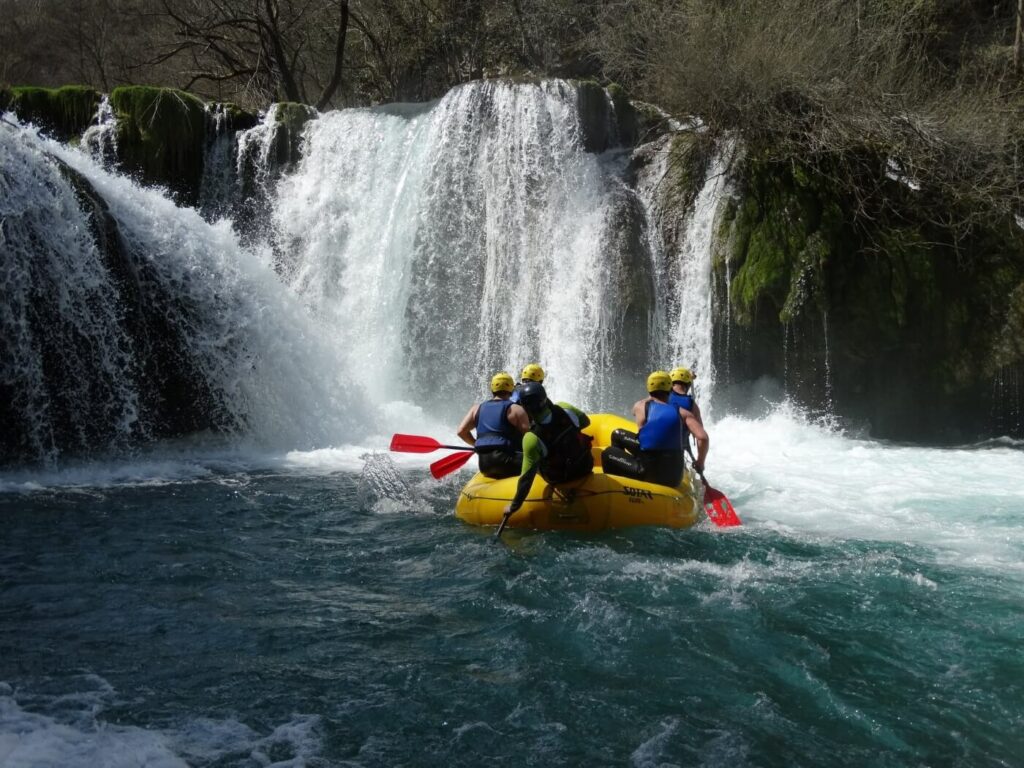
One of the best ways to get up close to the rivers of Karlovac is by rafting, rowing or canoe. If you want to go rowing, then contact the local sports club VK Korana. Both canoeing in Karlovac and rafting on a further away section of Mrežnica are part of the offer at Kamat. Additionally, you’ll find other options throughout Karlovac County. Namely, in Severin na Kupi, Slunj, Mjesto Primišlje, Rastoke and Ozalj.
3) Old Town of Dubovac
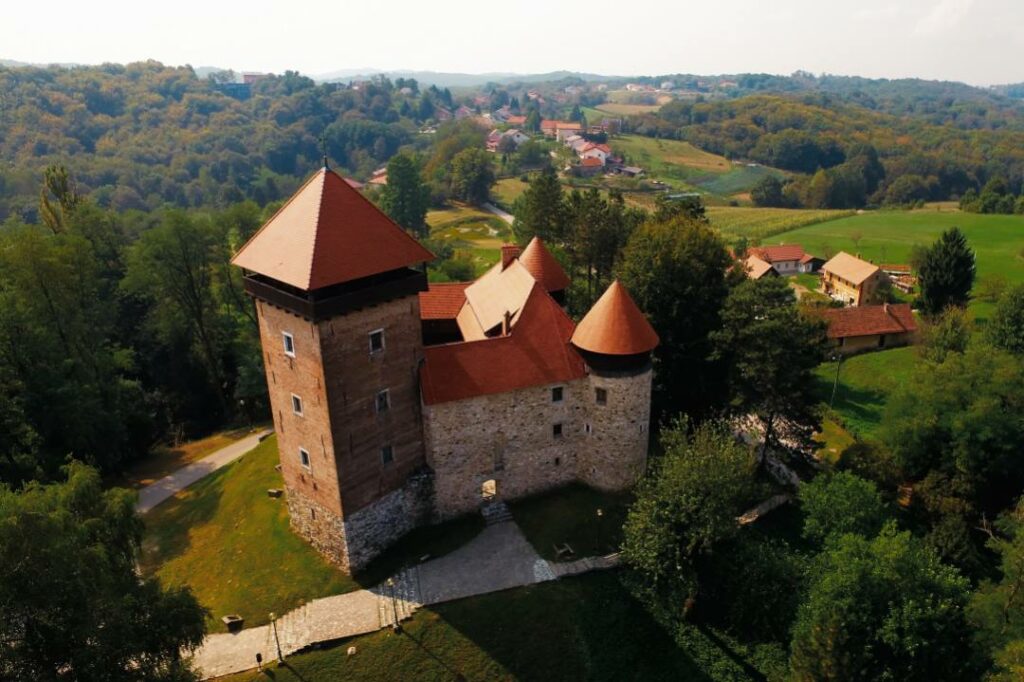
Known as the Old Town of Dubovac, this 13th-century fortress was the first major settlement here. When built, it was just one in a series of defensive fortresses that lined the hilltops of the region. In fact, you’ll find a fascinating map inside, detailing the position of others. Looking down over the city and Kupa, at 185 metres above sea level, the castle’s defensive services are no longer needed. In fact, they were supplanted by the construction of the star fort below.
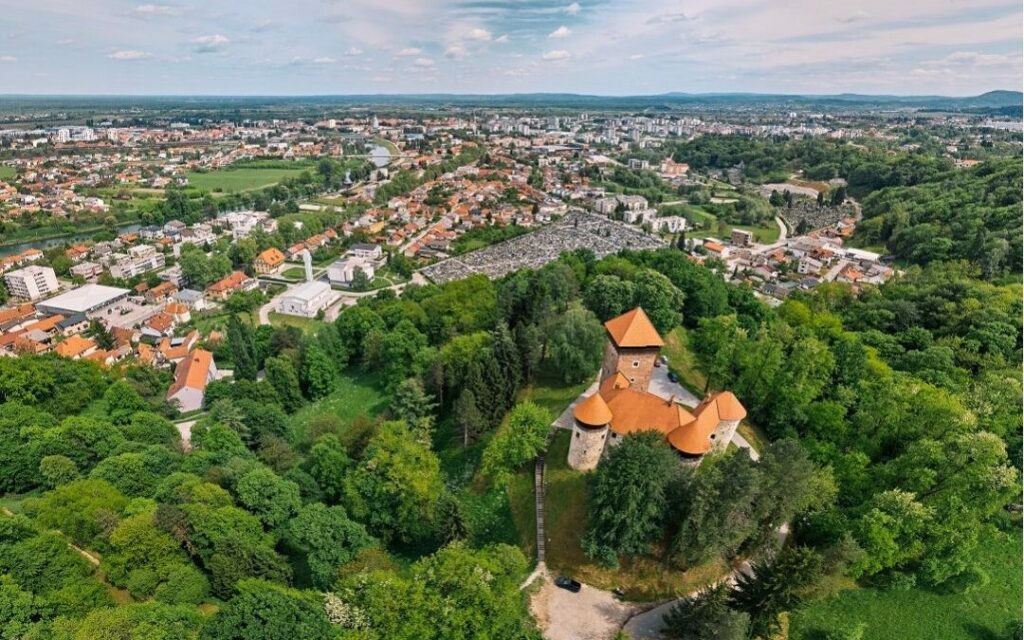
One of the best-preserved examples of feudal architecture in Croatia, the Old Town of Dubovac today houses a museum. At the top of the tower, you’ll get a fantastic view. Afterward, get lunch below at the restaurant in the castle courtyard. Genuinely, it’s one of the best places to eat in the whole of Karlovac. Also, it’s occasionally the host site for concerts, functions, parties and other cultural and social events.
4) Parks and Promenades: Enjoy the City of 10, 000 Trees
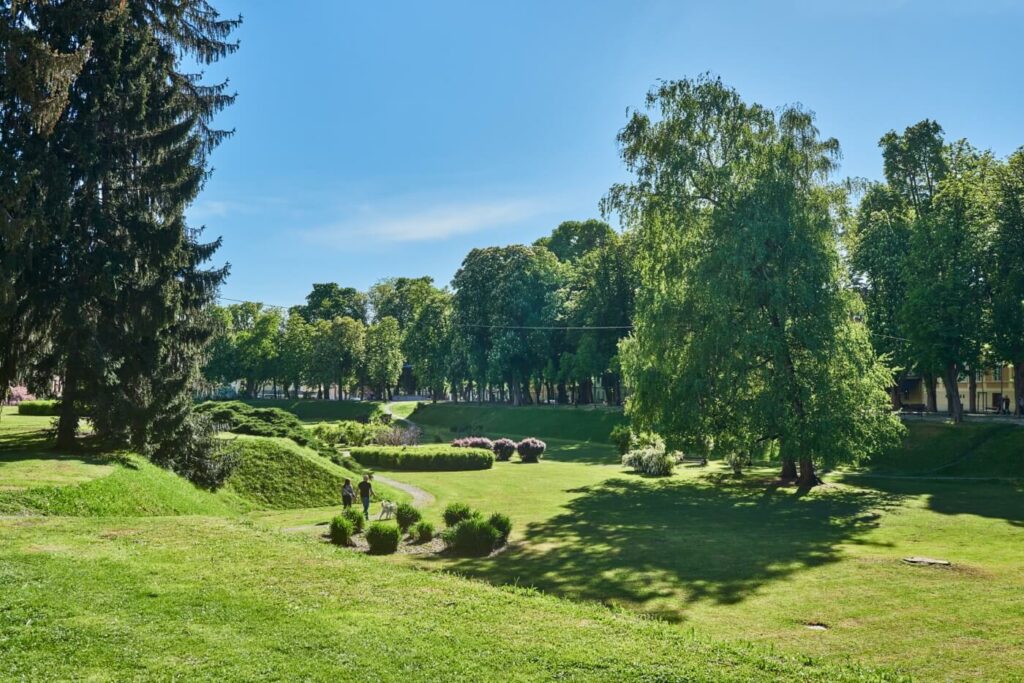
So much parkland and greenery runs through Karlovac that it has been referred to as a ‘Town Within a Park’. Of course, this opens the heart of Karlovac to recreation and events. Indeed, within the large green area between the Korana and town centre, you’ll find tennis courts and children’s playgrounds. Weaving through the different parks are tree-lined promenades. Explore them all by bicycle, or stroll through them at a gentle pace.
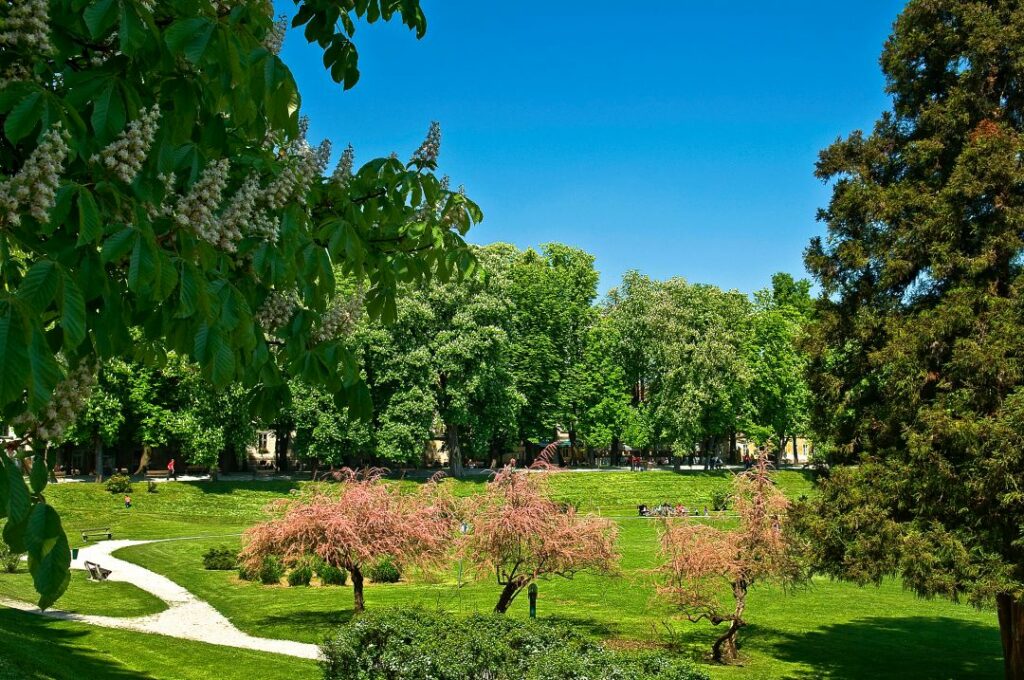
Vrbanić Gardens
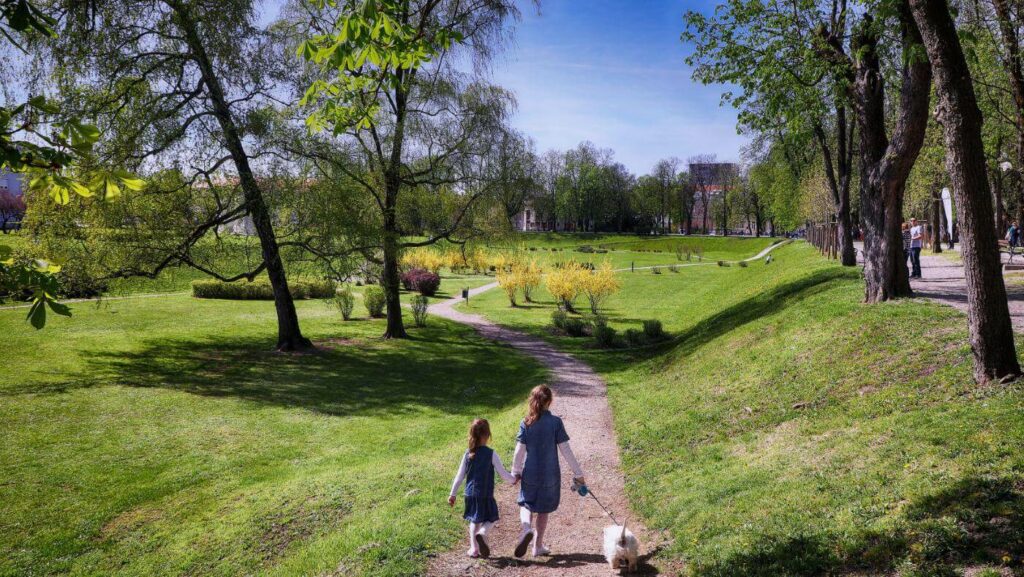
Central to the city centre’s green offer are the Vrbanić Gardens, opened to the public in 1896. Impeccably landscaped, it’s an unbelievably beautiful stretch of parkland where you could linger all day. Divided into three parts, you’ll find it located on the south-eastern part of the centre, between the Korana and Karlovac old town. Firstly, there’s an English-style plot. Secondly, you’ll see the central section laid out in a French style. Thirdly, the part made of coniferous spruces and firs.
City of Trees
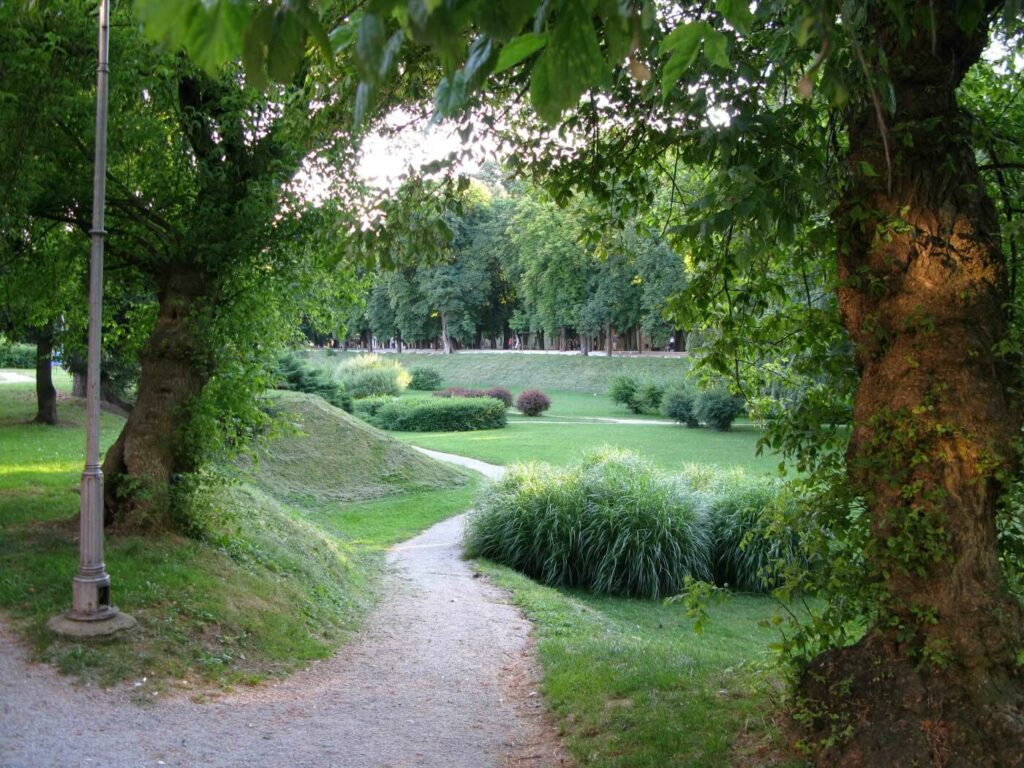
Over 10, 000 trees help breathe life into the centre of Karlovac. Not only do they reduce summer temperatures and noise, but also they purify the air. Also, some give a wonderful scent. In fact, the city never cuts down a tree, unless its health poses a direct risk to property or person. You can walk tree-lined avenues from the centre into some residential neighbourhoods. Karlovac really is a breath of fresh air.
5) Karlovac Museums and Aquatika
You’ll find a bunch of great museums and galleries in Karlovac. Namely, the City Museum, Firefighters Museum and Galerija Vjekoslav Karas. Here are some of the other highlights.
Homeland War Museum Karlovac
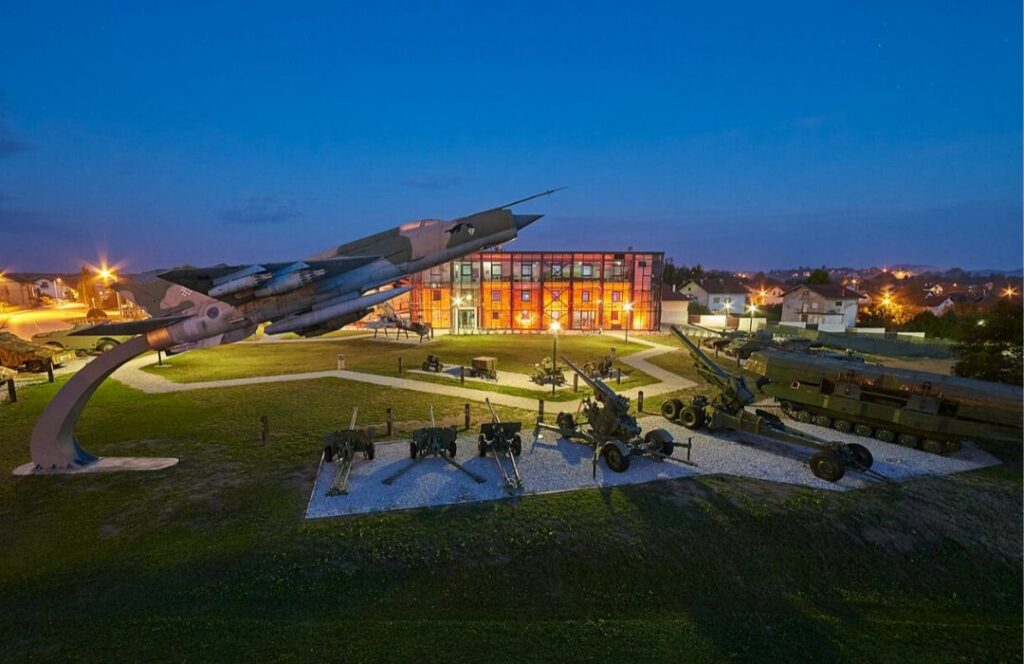
Originally built as a defensive fort, Karlovac has come under attack many times in its history. Most recently, during the war in the 1990s. Karlovac was quite close to the frontline of fighting. Shelling from a self-proclaimed autonomous region, briefly known as the Serbian Krajina, reached the town. Southern-lying neighbourhoods were damaged the most. But, shells also reached into the heart of town. This most recent war in Karlovac is remembered at the Homeland War Museum, a relatively modern institution. Find it in the neighborhood of Turanj, 4 km from downtown Karlovac.
Aquatika
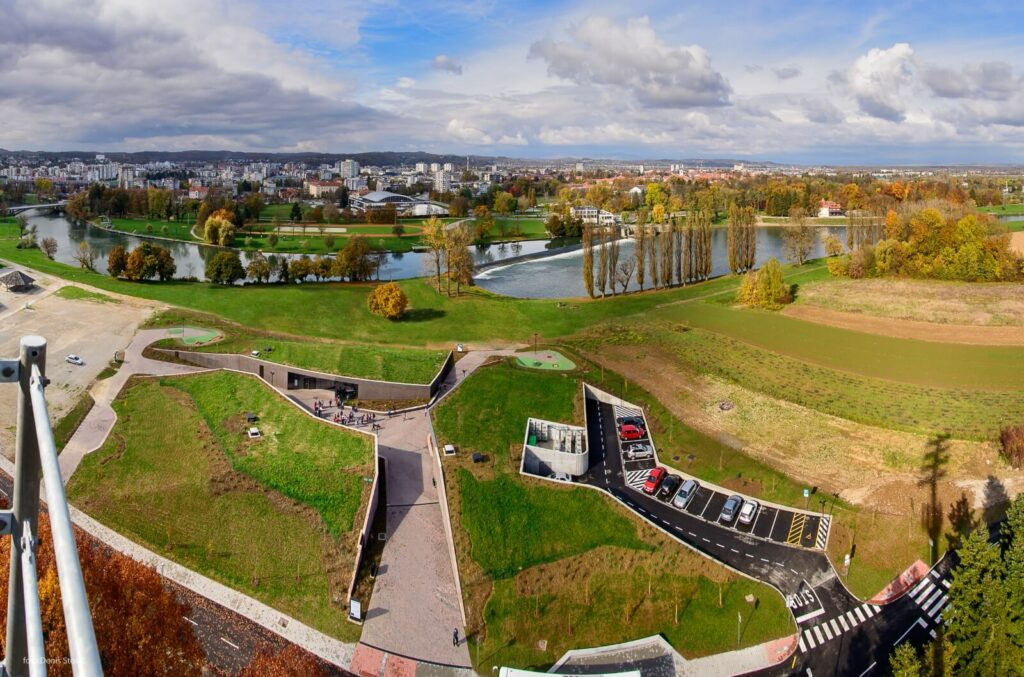
Croatia’s only aquarium dedicated wholly to freshwater fish, Aquatika is one of Karlovac’s best and most popular attractions. Did you know Croatia has the most indigenous freshwater fish in Europe? You’ll find over 150 species living in rivers here. Let Aquatika tell you about them. Over two floors, you’ll follow the course of Croatia’s rivers, descending from the mountains to the sea.
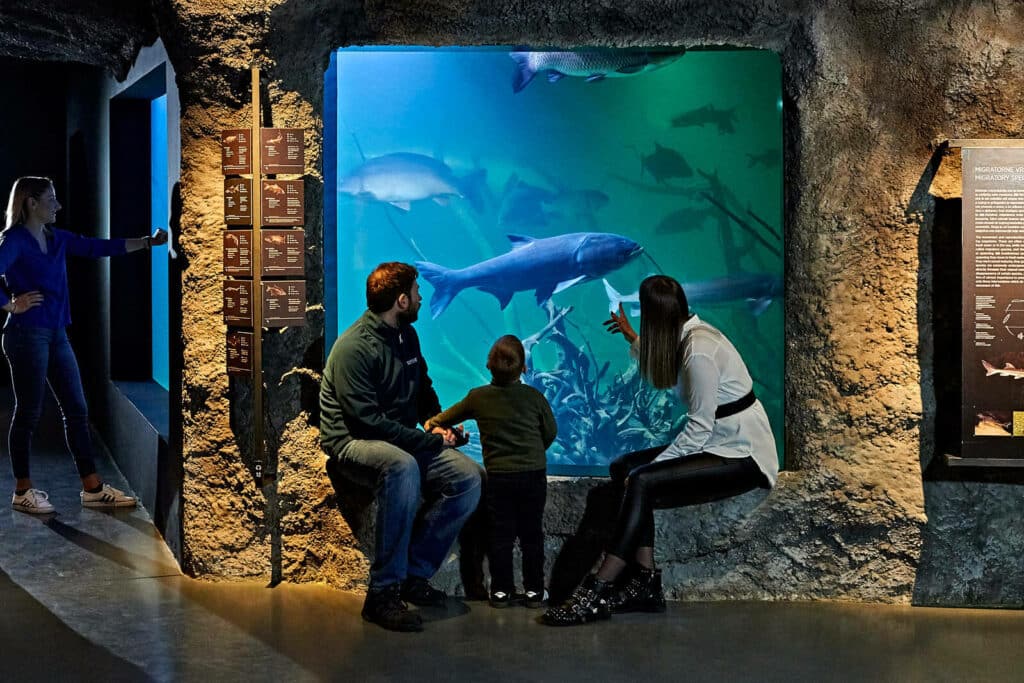
Franciscan Museum
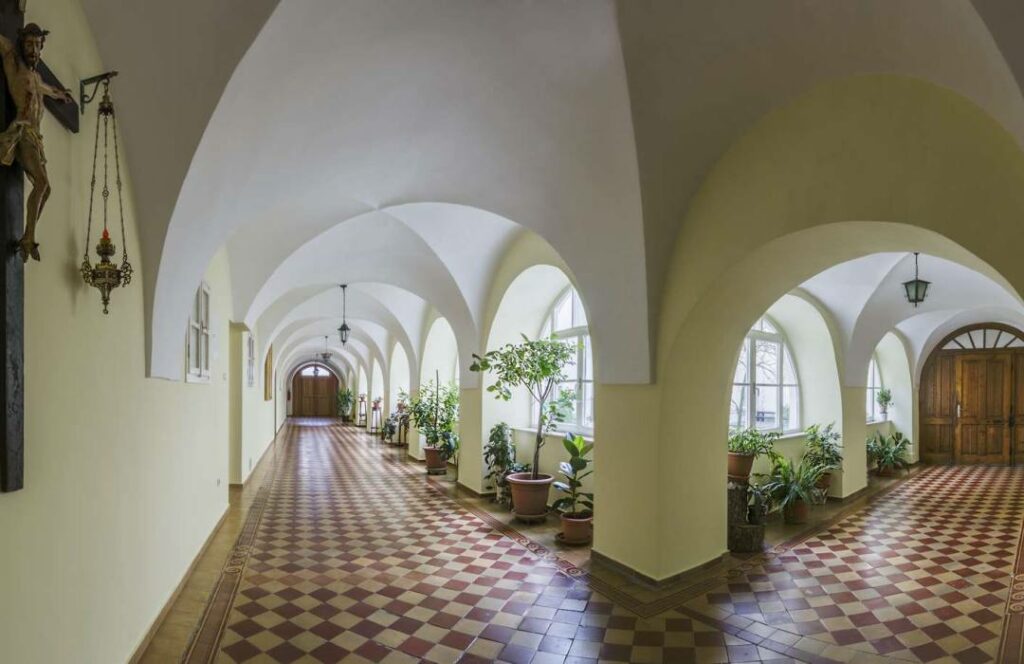
You’ll find a special ambiance to the Franciscan monastery and church complex. A beautiful collection of buildings and garden, it feels like an oasis of calm in an already peaceful town centre. The Franciscans have been here since the 17th century, as the collection here of ten thousand rare books attest. Also, there are religious monuments and they even have their own craft beer brewery. Take a tour in English, Italian or Croatian – they speak your language. You must organise your tour in advance.
Phone: + 385 98 187 4909
Mail: kalbert.fra@gmail.com
Accommodation: Where to stay
All manner of people come to stay in Karlovac throughout the year. Groups of schoolchildren visiting Aquatika or the museums. Couples taking a well-earned weekend break. Groups of friends drawn by town events. Also, campers who want to get close up to nature. Accordingly, you’ll find Karlovac accommodation to meet every standard and budget. From hostels and rooms to hotels, apartments and camping, check out the options below.
(function(d, sc, u) {
var s = d.createElement(sc), p = d.getElementsByTagName(sc)[0];
s.type = ‘text/javascript’;
s.async = true;
s.src = u + ‘?v=’ + (+new Date());
p.parentNode.insertBefore(s,p);
})(document, ‘script’, ‘//aff.bstatic.com/static/affiliate_base/js/flexiproduct.js’);
Hotel Korana-Srakovčić
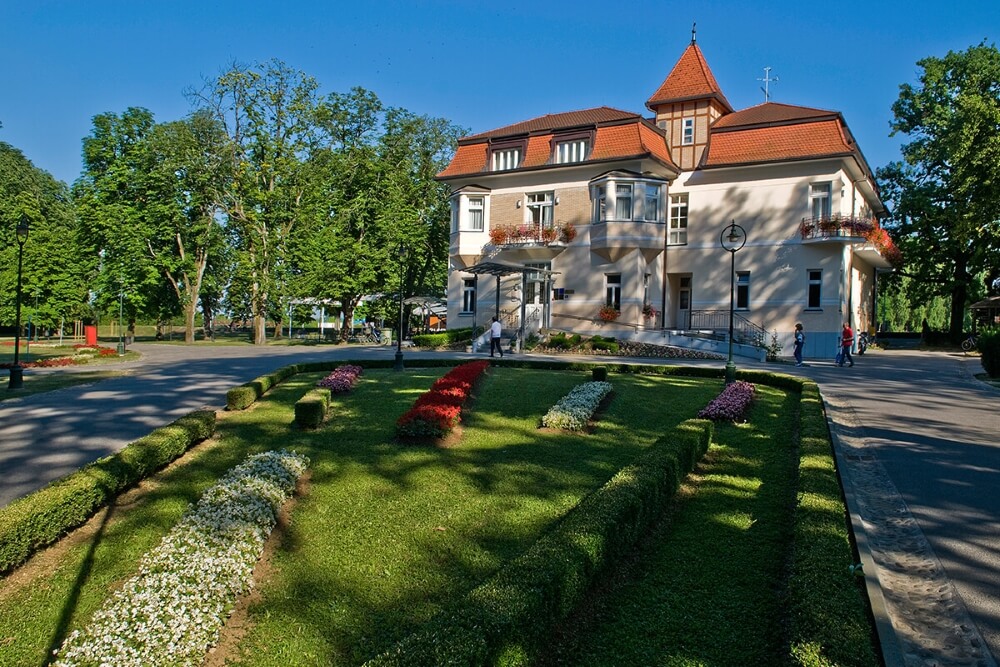
Such is the breadth of accommodation in Karlovac, it’s probably fairer for your investigations to guide your choice. But, special mention simply must be made of Hotel Korana-Srakovčić. If you’re walking through Karlovac parks or along the riversides, then you won’t miss it. The extremely pretty hotel sits on the banks of the Korana, surrounded by the largest stretch of green in the city centre. Holding 4-stars, the hotel boasts a wellness centre with a pool, sauna, solarium and massage offer. If you want to make the most of the pretty riverside view, then take your breakfast outside onto the terrace.
Food: What to eat in Karlovac?
Mushrooms
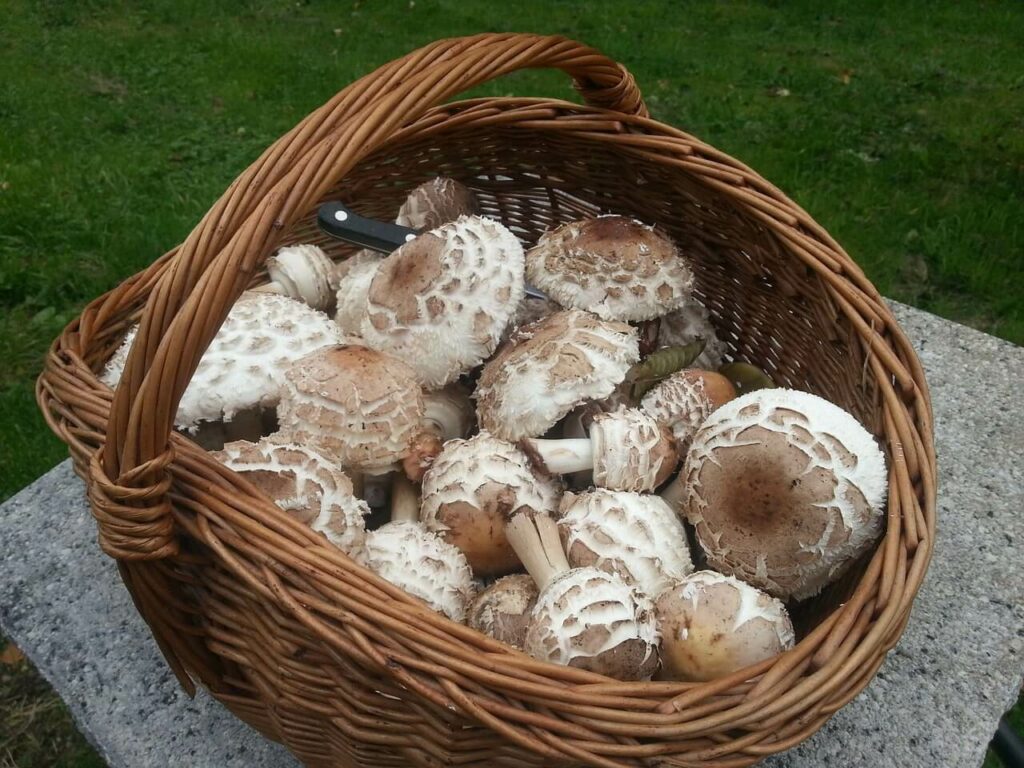
Did you know that Karlovac is one of the best places to go hunting for wild mushrooms? The hills and forests around the town contain a wealth of various edible mushrooms. Of course, unless you’re an expert, you should always go with a guide. But, if you want to skip the picking, you can still taste wild mushrooms in Karlovac restaurants. Furthermore – and contrary to popular belief – they’re not just available in autumn. In fact, some edible wild mushrooms grow throughout the year. If you want to see some of the mushrooms you can find on a guided hunt around Karlovac, then look here.
Where to try: Dobra @ Hotel Korana; Kalvarija; Lovački Rog; Kostanjac; M-90; Tempo; Bistro Palma; Črni kos; Pod Starimi Krovovi; Lana Korana.
Gifts from the river
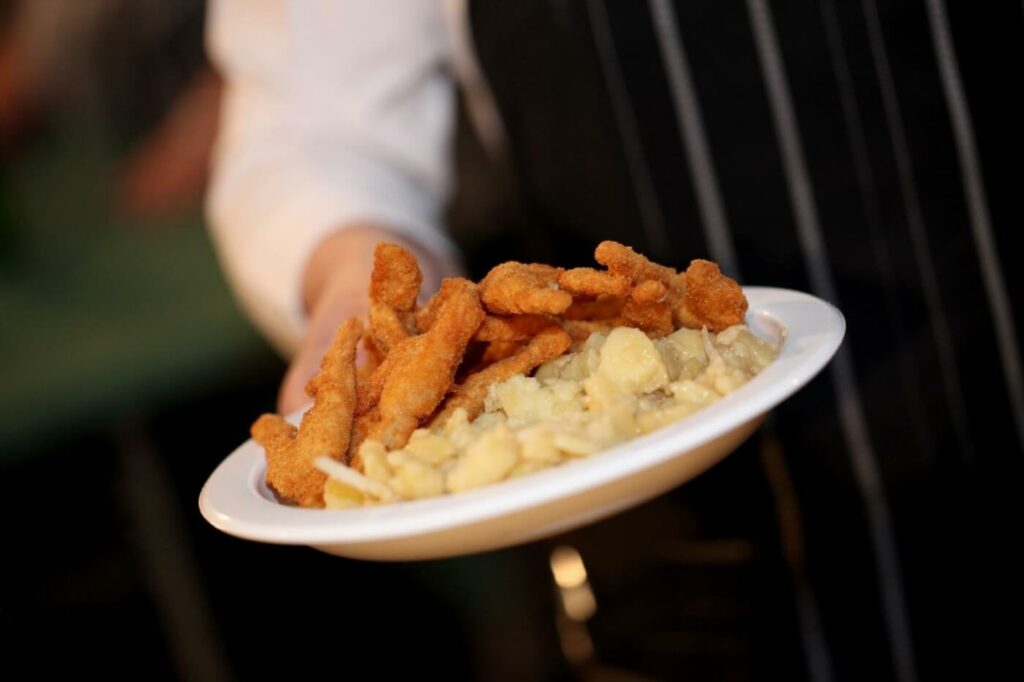
These days, you can enjoy calamari and sea fish in Karlovac restaurants. But, that wasn’t always the case. In fact, travel through the mountains was once much more of an ordeal than it is today. As a result, the local menu relied more on gifts from the river. Namely, river fish, eels and frogs. Indeed, you can still find these traditional favourites served at some places in Karlovac. Frogs legs, deep-fried in a light batter, is actually a lovely choice for lunch by the river.
Where to try: Kvaka; Lovački Rog; Tempo; Bistro Palma. M-90; Dobra @ Hotel Korana; Kostanjac; Črni kos; Pod Starimi Krovovi.
Beery bites
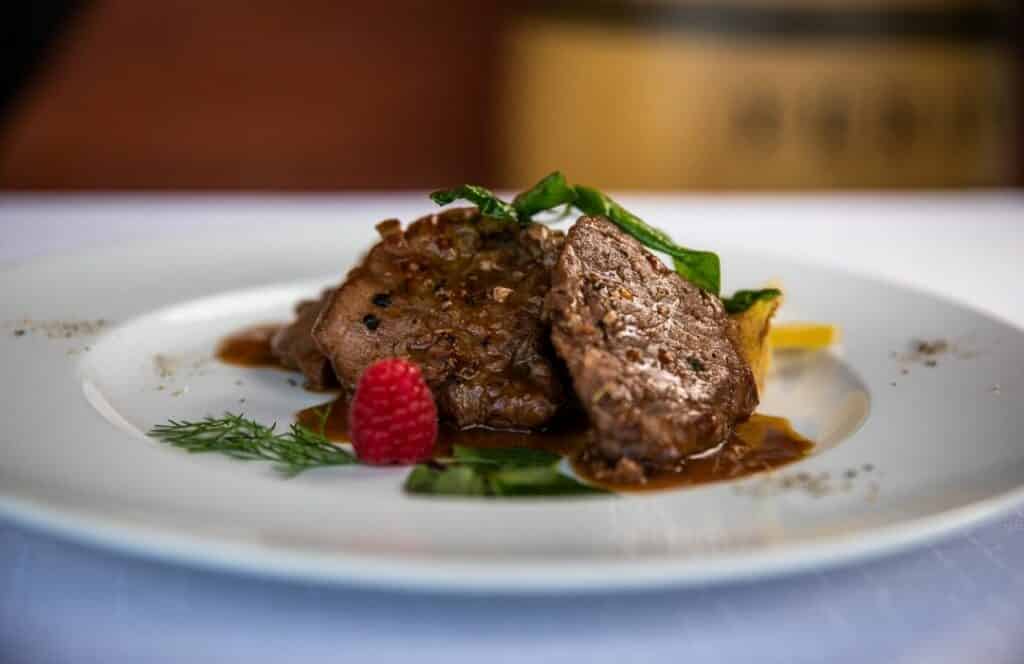
Of course, in a town renowned for beer, no surprise to see the amber nectar making its way into recipes. Hearty stews, with meats braised in a rich beer-based gravy, served with pasta, potatoes or even polenta; you simply have to try.
Where to try: Dobra @ Hotel Korana-Srakovčić; Črni kos; Pod Starimi Krovovi; Lovački Rog; Tempo; Bistro Palma; M-90.
Just desserts: Chestnuts and Karlovac Choco Bar
Chestnuts
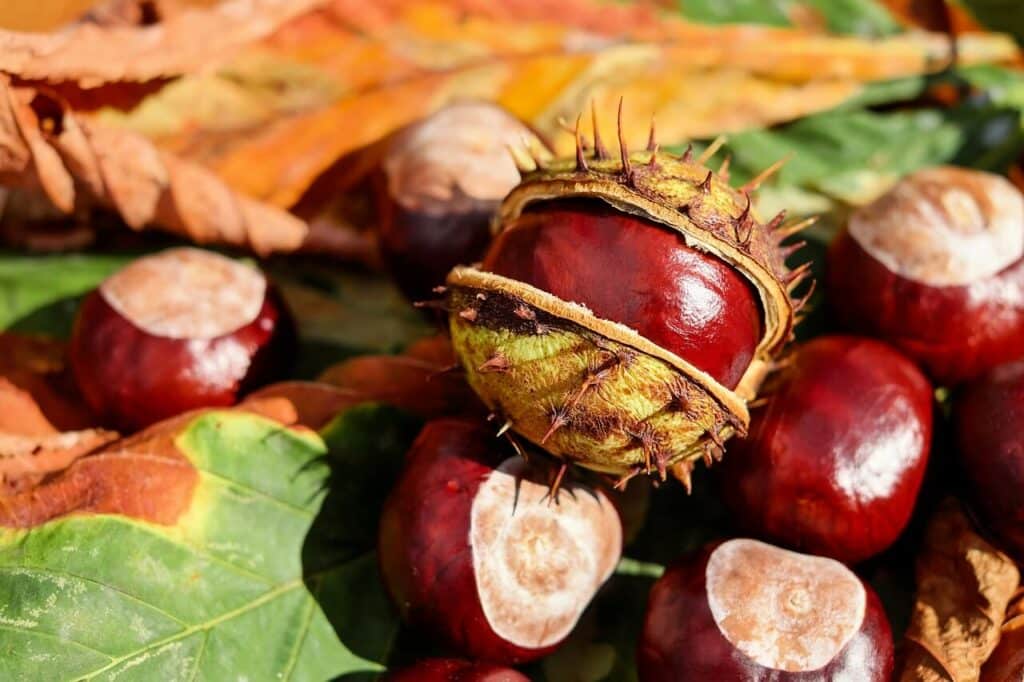
Traveling around Croatia, you’ll notice that local specialties extend to desserts as well as mains. In some places, it might be a gelato to rival anything in Italy. In others, a cake or a pie or a particular ingredient. For example, in Slavonia you’ll find poppy seeds, cherries and walnut flavours everywhere. In Karlovac, it’s chestnuts.
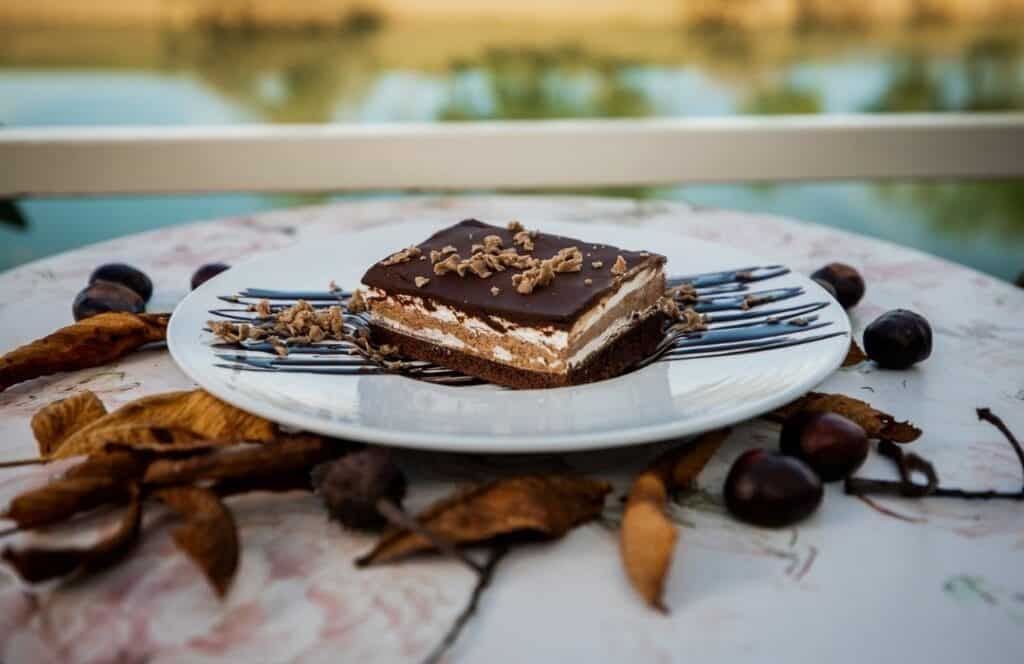
Indeed, this autumnal treat makes its way into cakes, torte, ice cream, cheesecakes and more. Certainly, it’s true to say Karlovac has something of a sweet tooth, reflected in the number of places that do great desserts. But, also, there’s an inventive side to the way the town keeps reinventing the use of chestnuts. If you want to try them at their most bountiful and fresh, then come in autumn and winter. But, don’t worry if you can’t make it then. Because, in Karlovac, you’ll usually find chestnut flavours year-round.
Places to try: Kvaka; Tara Sweets; Kalvarija; Lana Korana; Lovački Rog; Tempo; Bistro Palma.
Karlovac Choco Bar

Of all the places to try Karlovac desserts, the repute of one, in particular, extends way beyond the town. Both locals and visitors love to come to Choco Bar for a coffee and cake break. Pastries, torte, strudel, cookies, cheesecake and colourful individual slices tempt you from behind the glass counter. All you have to do is choose which of these freshly-made delicacies you’ll enjoy alongside your coffee. Unless, like most, you also take away something for home. If you want to drop by for coffee and cake, then find them at Luščić 8b.
5 things you (maybe) didn’t know about the town
Famous Karlovac Gymnasium
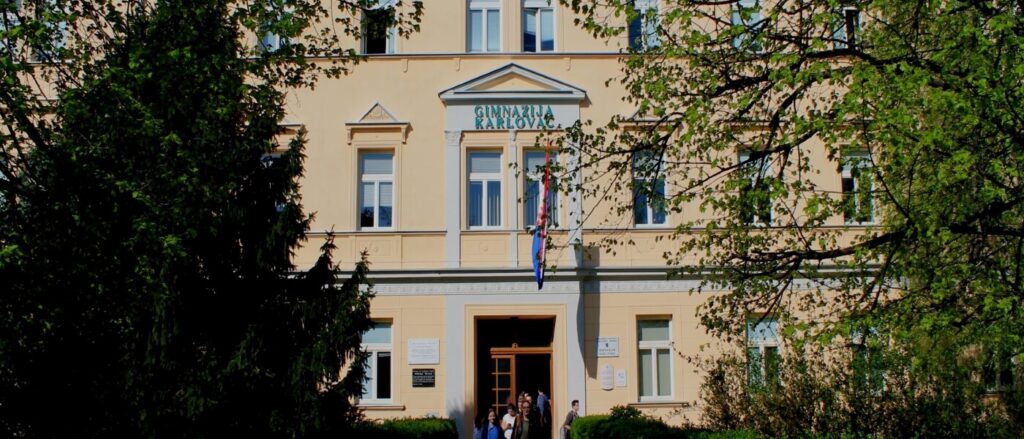
Founded as early as 1766, when Maria Theresa of Austria sent religious clerics to teach here, Karlovac Gymnasium is perhaps Croatia’s most famous high school. At first, education was limited. Only two grades were taught, with the main subject being Latin. However, the institution endured and received in 1863 the dedicated building where it stands today.
In truth, much of its fame can be attributed to some of its well-known former alumni. Specifically, Croatian poet and writer Ivan Goran Kovačić and explorers, the brothers Mirko and Stjepan Seljan were schooled here. Also, outspoken politician and champion of the transformative power of education, Stjepan Radić. Not to mention, one rather famous inventor…
Nikola Tesla went to school here
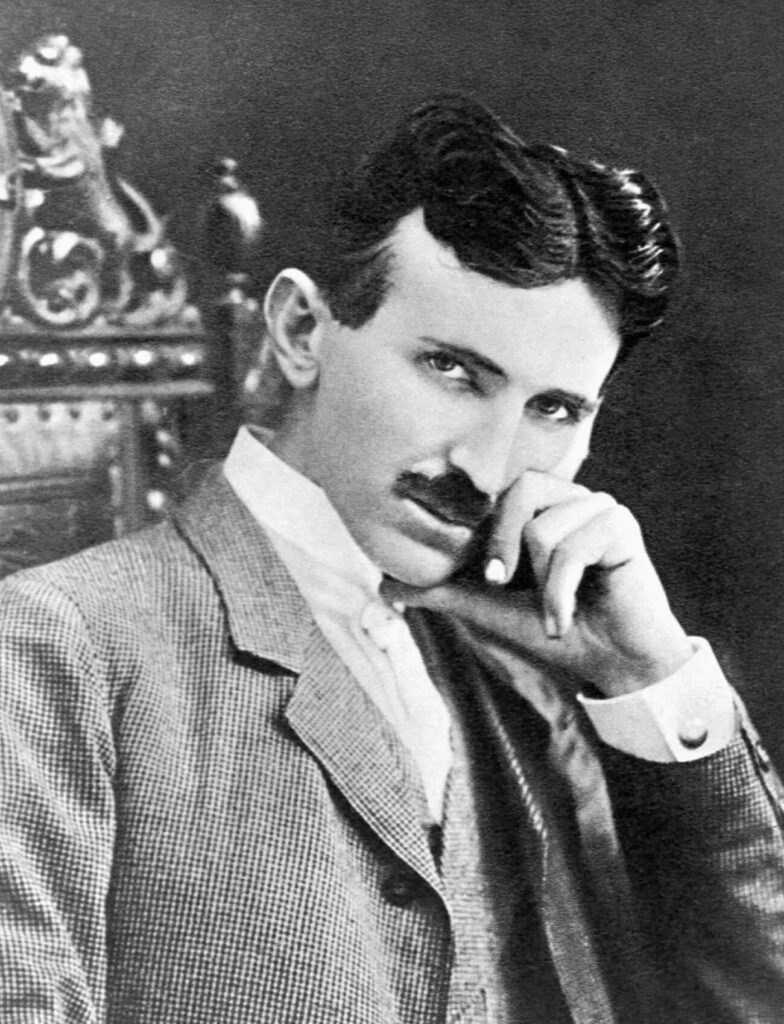
An inventor and hugely innovative engineer, Nikola Tesla is best known for pioneering the alternating current (AC) electricity supply system. AC enables electricity to be provided safely to every home, street and business today. Tesla was born in 1856 in the village of Smiljan, in Lika, back then a part of Austro-Hungary. But, in 1862, his family moved to Gospić where Tesla’s father worked as an Orthodox parish priest.
Nikola Tesla himself was supposed to follow his father and his mother’s father into the Orthodox priesthood. Thankfully, he did not. Instead, in 1870, Nikola Tesla moved to Karlovac to attend the Higher Real Gymnasium. He spent three years at the school. Specifically, from 1870 to 1873 (from 14 to 17 years of age). In fact, the diploma he got here was the only one he attained. Subsequently, family and health problems prevented him from fully completing further studies. Eventually, he made his way to America, where he spent much of his career. But, he has never been forgotten in Karlovac. In fact, a new Nikola Tesla exhibition centre now stands next door to the place of his former schooling.
…but the cinema was named after his rival, Thomas Edison!
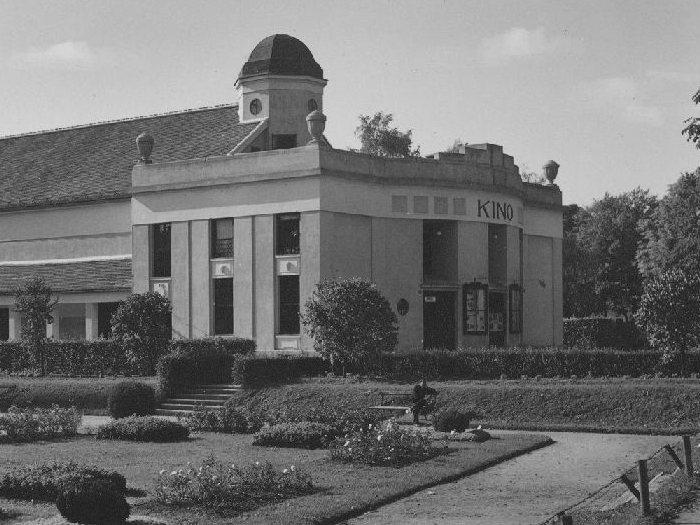
Designed and built between 1918 and 1920, noted Austrian architect Bruno Bauer had intended the building to be called Atlas. Indeed, it was supposed to have a statue of Greek god Atlas holding the earth on its front facade. But, the purpose-built cinema’s investors didn’t like the idea. Instead, they named it after Edison.
In the here and now, this seems like a frightful insult to Karlovac’s most famous former student, Mr. Tesla. But, back then, the rivalry between the two wasn’t really recognised. Neither was Mr. Tesla’s ‘hometown’ worth. One of the first buildings in Croatia built specifically for showing film, this 470 seat venue kept its crown as Karlovac’s premier cinema for many decades. Even through times when the town boasted a further four cinemas! In the 1930’s, sound films were introduced here and in 1957 the first Cinemascope projection took place. Unfortunately, it has been closed for several years, awaiting renovation. However, 2020/2021 plans for its reconstruction indicate the wait may soon be over. Furthermore, the revealed design finally includes the Atlas statue Bruno Bauer envisaged. Now, we’ll just have to wait and see how it will be named…
The First School of Music in Croatia
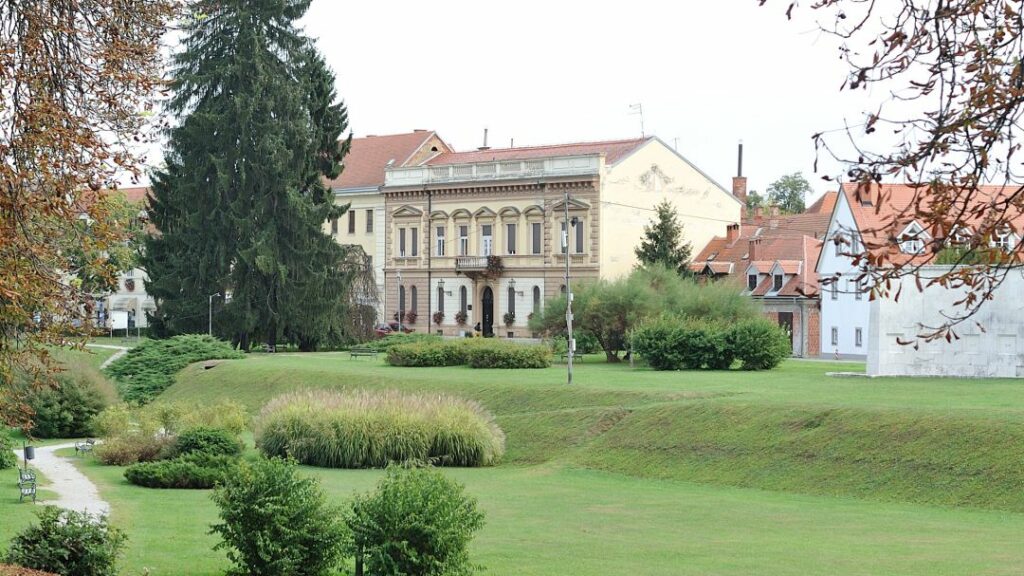
Housed inside a beautiful Neo-Renaissance palace, Karlovac Music School has long been producing highly talented graduates. Not only is it the only school of the arts in the county, but also the oldest music school in Croatia. In fact, it was founded even before Wagner or Verdi were born. On warmer days, you can sometimes relax in the park and listen to the quest for perfection coming from open windows. Although, you’ll find public performances throughout the year by students, including at many Karlovac events.
Fantastic Street Art of Leonard Lešić
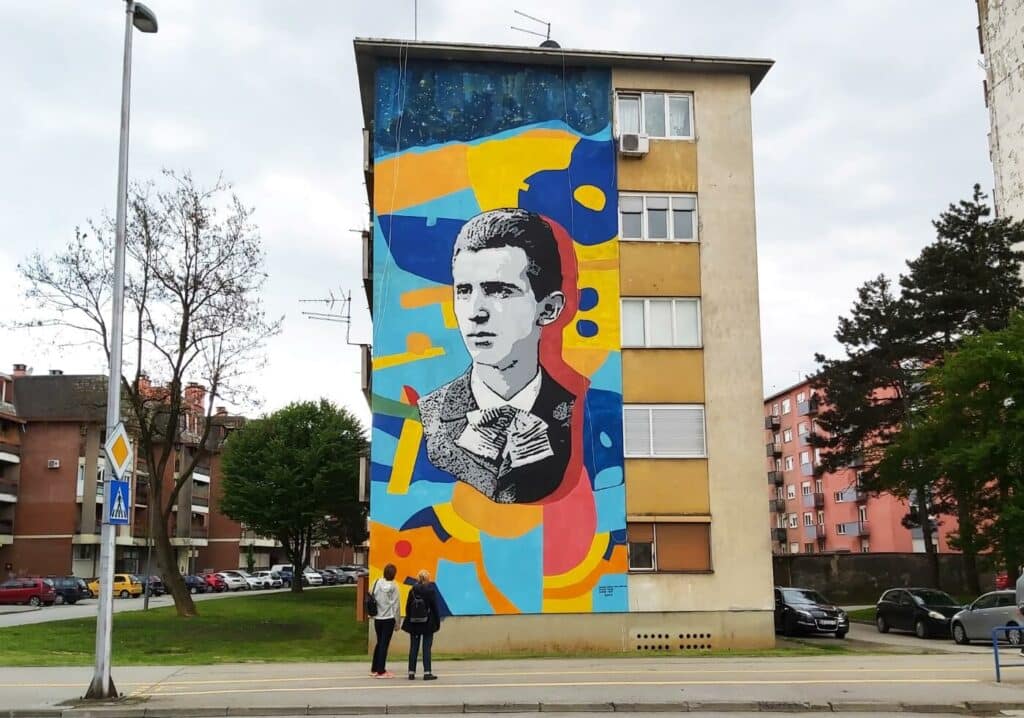
Generally, the overwhelming colour of Karlovac is green, thanks to its parks and trees. However, over recent years, an increasing number of brilliantly colourful murals have joined the cityscape. Many of the best are the work of local artist Leonard Lesić, from nearby Duga Resa.
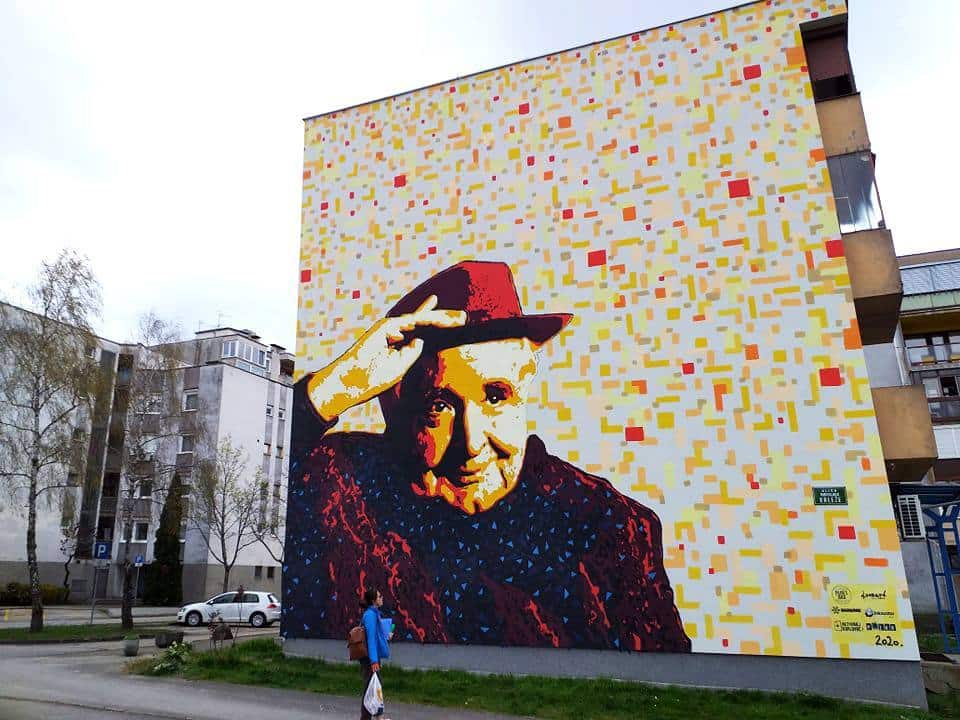
Celebrating Miroslav Krleža’s birthday, in 2019 he painted a much-loved Karlovac mural of the famous writer. After that, famous Croatians connected with Karlovac seem to be appearing at regular intervals around the town. Specifically, keep a lookout for painter Vjekoslav Karas, explorers Stjepan and Mirko Seljan and poet Slavko Mihalić. Additionally, you’ll see more of Lesić’s work in Karlovac suburb Rekovec, Ozalj, Turanj and Duga Resa.

Top 5 day trips from Karlovac
Plitvice Lakes National Park
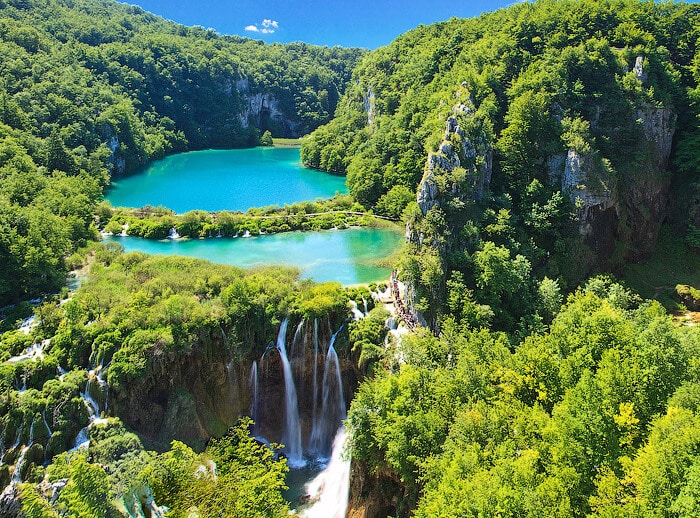
Croatia’s best-known and most visited National Park lies just 78 kilometers south of Karlovac. Indeed, Karlovac is the closest major town to the park. At Plitvice, you’ll find a series of lakes, descending dramatically via many waterfalls. Walkways and boat rides help you get close to the spray. By comparison, in the rest of the near 300km2 park, you’ll find dense woodland and undisturbed nature. If you want to learn more about the park, then read our guide.
Karlovac County
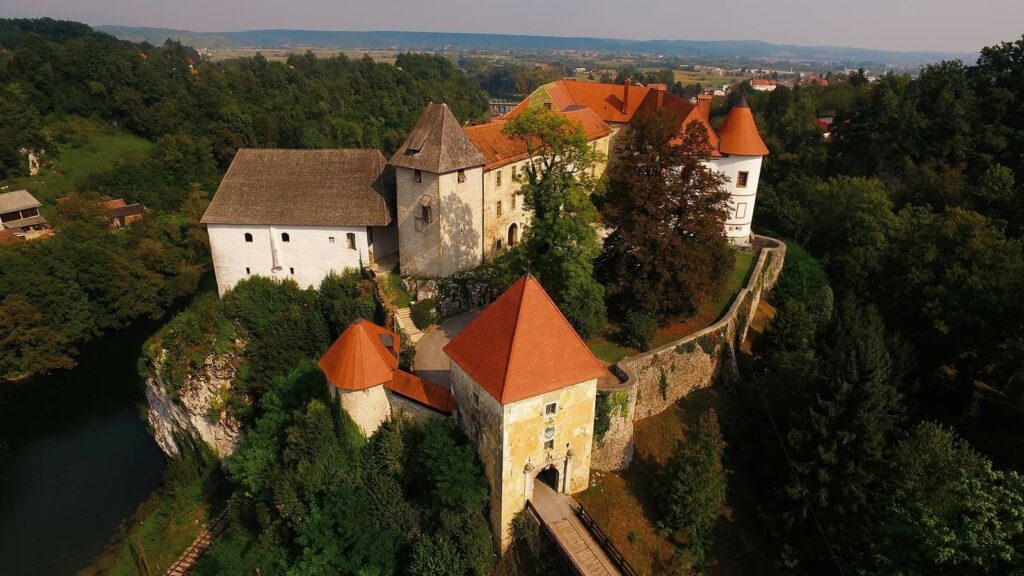
If you don’t mind venturing off the beaten track, then the best advice is to explore Karlovac County. Hop on the 30-minute train ride to Ozalj and take in the scenery along the route. Finally, at your end destination, you’ll be greeted by the most incredible castle. If castles are your thing, then take a wild walk to find the fascinating and abandoned Bosiljevo. Both bicycle and boat are great ways to explore the wider region. Follow the paths of the rivers. If you venture far enough, then you might discover waterfalls on Mrežnica or in Rastoke, Slunj. Also, if you’re visiting in summer, you’ll find arguably Croatia’s most idyllic river swimming spots here.
Zagreb
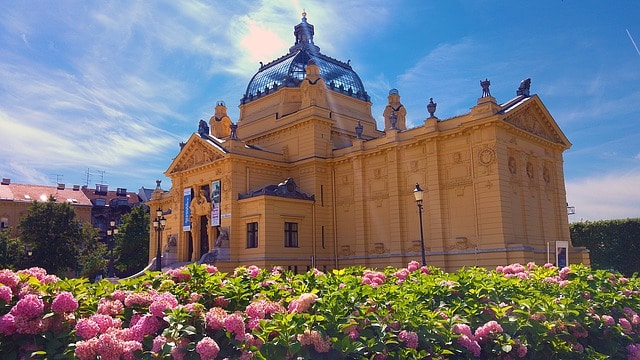
Not only the economic and administrative capital, but also the epicenter of culture and events in Croatia. If you want to really know Croatia, then a visit to Zagreb is essential. In terms of population, it dwarfs everywhere else in Croatia. Accordingly, it has all the diversity you’d expect from a modern European capital. In fact, over recent years, Zagreb has become the most-visited destination in the country. Certainly, it earned the title for good reason, not least because its offer is year-round. If you want to read up on Zagreb, then check out our detailed guide.
Samobor and Žumberak Nature Park
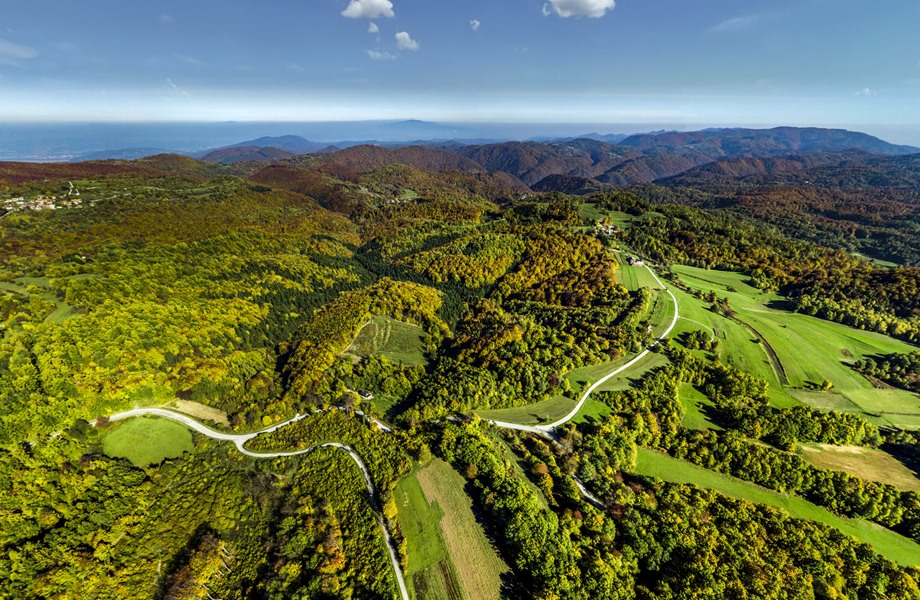
Certainly, Samobor is one of the more popular weekend getaways from Zagreb. Not only is the town itself very pleasant, but also it sits by a beautiful stretch of rolling hills. Indeed, many find the unchallenging gradients but spectacular scenery of Žumberak perfect for hiking. Also, the town itself is rather famous for a few distinct, local dishes. If you want to learn more, then read our guide.
Rijeka
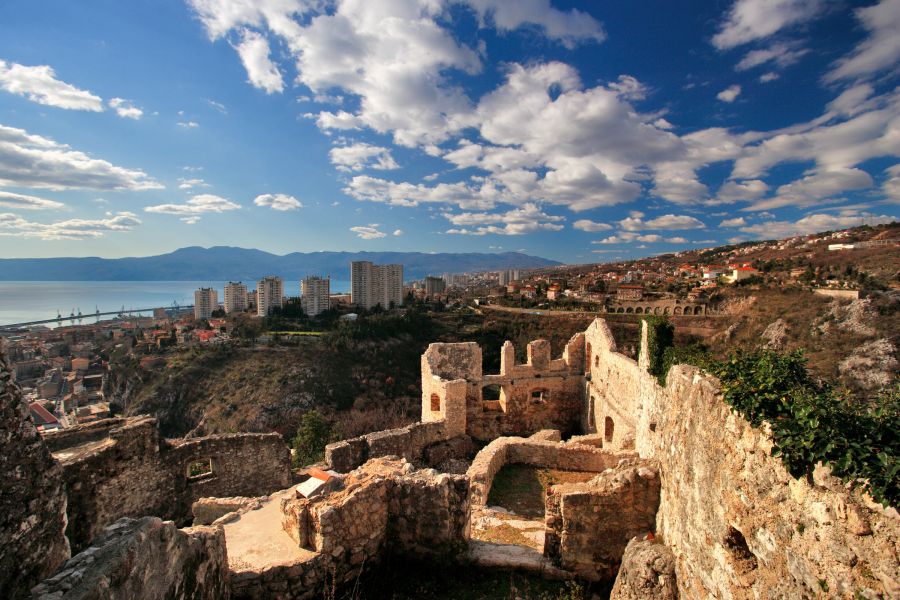
If you’re in Karlovac, then your nearest Adriatic beach is in Rijeka. Although, there’s much more to this unique, former Austro-Hungarian port than sunbathing and swimming. Both diverse, modern culture and interesting, varied heritage are part of Rijeka’s offer. If you want to learn more about this fascinating anomaly of the coast, then read our detailed guide.
Where is Karlovac? Map
Karlovac is located in central, continental Croatia and acts as the administrative and cultural capital of Karlovac County. Specifically, it is 56 kilometers southwest of Zagreb and 130 kilometers east of Rijeka. The city sits on all major road and rail connections between continental Croatia an the coast. Also, Karlovac is only around 15 kilometers from the border with Slovenia. In detail, its GPS coordinates are 45.4929° N, 15.5553° E.
How to get to Karlovac and get around
Flights, nearest airport to Karlovac
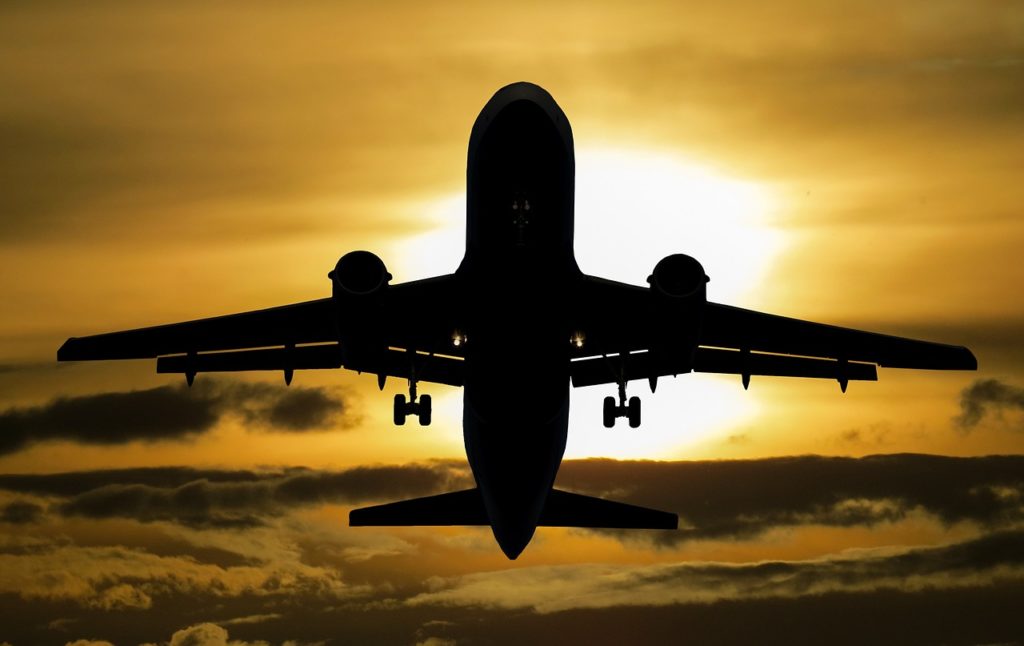
At a distance of just 62 kilometres, Zagreb airport is the nearest airport to Karlovac. By car, the journey takes around 40 minutes. After that, the next nearest is Rijeka airport, at a distance of 132 kilometres. By car, the journey takes around one hour 30 minutes. Additionally, Ljubljana airport in Slovenia is within easy reach of Karlovac. In this case, the distance is 160 kilometres and the journey takes a little over 2 hours.
Road, by car
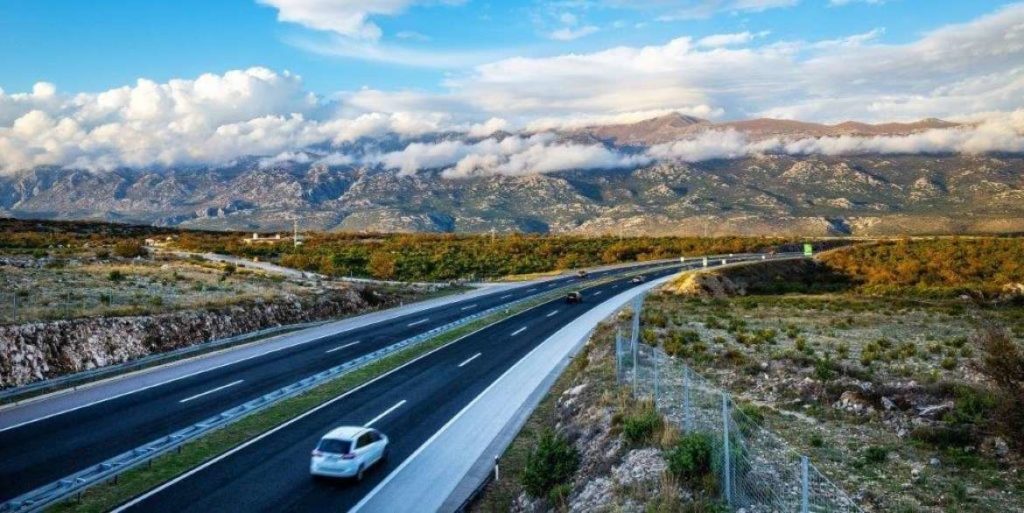
If you’re anywhere in Croatia east of Karlovac, then your road journey to the Croatian coast passes through the city. The few minor exceptions would be people in eastern Slavonia who instead travel via Bosnia. And, residents of a small area in Sisak-Moslavina. To clarify, almost every road journey between continental Croatia and coastal Croatia goes through Karlovac. Both Croatia’s longest motorway, the A1 and the old coastal road, the D1, pass through Karlovac.
Looking for a fast, reliable and trouble-free transfer to or from Karlovac? Contact TC transfer partner Adriatic Transfers for your one-stop solution.
Karlovac Bus: Intercity and local
Travelling intercity by bus in Croatia is a fast, popular and reliable option. Indeed, you can easily reach Karlovac by bus from anywhere in Croatia. In fact, Karlovac has the second-busiest intercity bus station in Croatia, after Zagreb. Indeed, every bus travelling southeast from Zagreb stops here, whether heading to Dalmatia, Kvarner, Istria or Plitvice Lakes.
Train
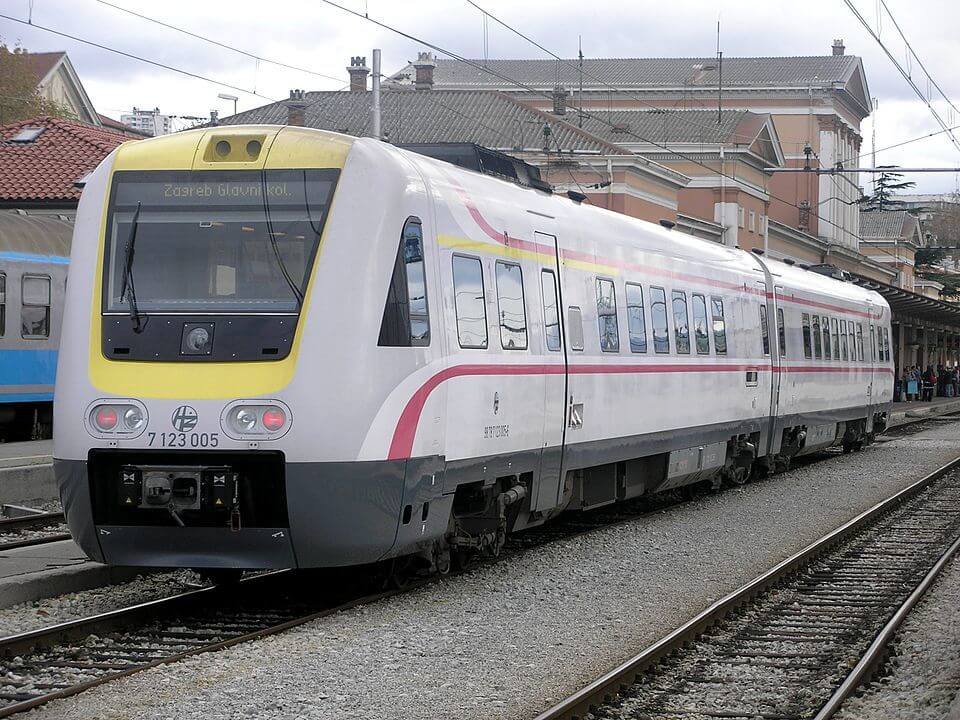
Karlovac is well connected by train to the Croatian rail network and the town has two train stations. In fact, all trains travelling southwest out of Zagreb stop in Karlovac, before they branch off. Subsequently, you can get to Karlovac by train from Rijeka and Opatija. Also, from Split, Šibenik and Zadar. Furthermore, Karlovac has its own unique branch line, running to Ozalj. The journey takes less than 30 minutes.
Both the author and Total Croatia would like to thank the following for their help in creating this guide: Marina Burić and the Tourist Board of Karlovac, Jasmina Cvetković.
More information
Karlovac Tourist Board (Visit Karlovac)
Address: Petra Zrinskog 3, 47000 Karlovac
Email: info@visitkarlovac.hr
Telephone: +385 47 61 51 15
Website: visitkarlovac.hr
Facebook: facebook.com/VisitKarlovac/
If you want to get the latest news for Karlovac, then check Total Croatia News here.

